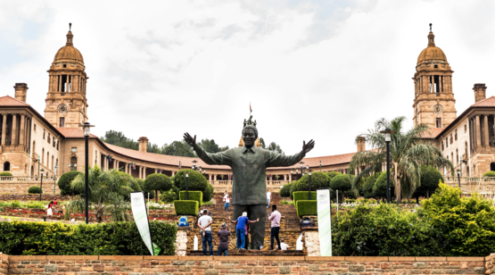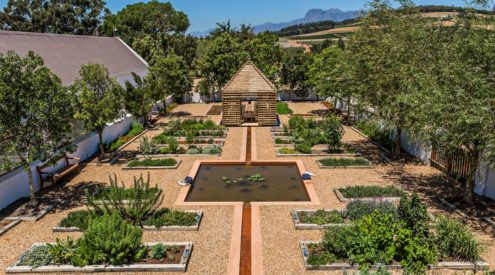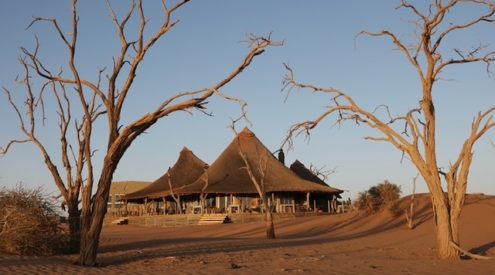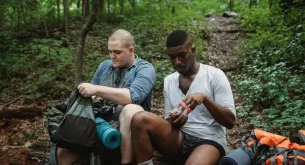How often have we heard the expression, ‘if only these walls could talk?’ Just imagine if they could and what secrets one would discover? That is why I enjoy museums so much. Well preserved artefacts provide us with a sense of time and place. Newspaper clippings, journals, art, poetry and music from a bygone era, extend an unobtrusive invitation into the lives of those who have lived before us.
The Knysna Historical Society has been hard at work marking the buildings of historical value in Knysna. An informative brochure, detailing a self-guided Heritage Building Walk of Main Street, is available from information and is easy to follow. Buildings and architecture provide the visual appeal but it’s the people of a town that confer the soul and leave a legacy.
Birthing and Baking – all in a day’s work
After hearing this story from a local resident, I’m convinced the modern woman is all the more appreciative of birth plans, epidurals and soft music.
In the early 1800s, the Fauconnier family lived not far from the current Knysna Mall. During her morning bread baking routine, Mrs Fauconnier went into labour. Putting the loaf in to bake she went to the bedroom and gave birth; returning to the kitchen to remove the bread from the oven before it had time to burn. ‘Ai, they made them differently in those days,’ remarked the resident.
An audacious act that required an all night vigil
In 1849 the foundation stone for old St George’s Church was laid. In customary fashion coins and important documents were buried beneath it. The following morning news arrived that someone had stolen the money. This necessitated the replacement of the stolen goods along with the relaying of the stone. Legend records the son of George Rex, John Rex, sat on the foundation stone, keeping an all night vigil, until it had set.
You will hang by the neck until dead
There was no deliberating in this instance. In May 1860 the gallows, for Knysna’s first (and only) public hanging, arrived by ship. Before the month ended, the victim – or culprit – one Jacob was executed in front of a crop of foliage known as O’Reilly’s Bush, ‘between the hours of 8 and 10 in the forenoon.’
Royalty comes to town and the hunt is on
At a plucky young age Prince Alfred, Queen Victoria’s second son, embarked on a royal visit to South Africa. During his time spent in Knysna he participated in an elephant hunt whereupon he acquired the heads of two elephant and the skin of one.
From hats, shoes and general dealer to coffee and musings
At the callow age of 12, Harriet’s father apprenticed her to learn the trade of dressmaking and millinery. With spinsterhood looming, she married shoemaker, Alfred Brown. They had three children. Sadly tragedy struck after five years of marriage. En route to Cape Town to buy supplies for his shop, the ship Alfred was sailing on struck rock near Cape Agulhas and sank. Alfred was among many passengers who were lost at sea that day.
Three years later Harriet married British immigrant, James Harry Templeman. They had three children together. James Templeman built an extra store for Harriet’s business (later known as Templeman’s) which in turn became a general dealer in the early 1900s.
Today, one is able to sit on the pavement of the old Templeman’s building, café style, and enjoy a light meal and refreshments at The Coffee Connection while musing over the Victorian epoch.
Bank manager assembles his own car
In 1898, the manager of the Standard Bank, Mr Harden, was the first person to own a car in Knysna. After selecting it from a catalogue he had it shipped to Knysna from America. It arrived in a box whereupon it was assembled using an instruction manual. It was rumoured that Mr Harden had yet to learn how to drive a vehicle.
From a captain’s tavern to a royal hotel
Captain Thomas Horn opened St George’s Tavern in 1856 with the intention of running it as a hostelry. Subsequent to Prince Alfred’s visit, the prince granted the proprietor, Captain Horn, the good fortune of renaming his establishment The Royal Hotel, in his honour. This was not the last time a nobleman negotiated the threshold of The Royal Hotel. In the month of May, 86 years ago, Edward, Prince of Wales, stopped by on a one day visit to Knysna.
Adding to their property portfolio, the Horns purchased The Bungalow at The Heads. Appealing to city folk, this invitation was advertised in 1896:
‘Johannesburgers wishing to cool their heated brows in the Indian Ocean can secure Horn’s cottage by the sad, sea waves, if they apply in time.”‘
Irish playwright and Nobel Laureate, George Bernard Shaw, and his wife Charlotte were among other prominent guests to stay at The Royal Hotel. Their visitation occurred under new ownership of Mrs Parkes’ * father.
An extract from Mrs Parkes’ book entitled, Vanishing Knysna – Views of the past reads:
‘Mr and Mrs Shaw arrived in Cape Town on the Carnarvon Castle at the end of January 1932. Shaw passed his driving test in Cape Town and insisted on driving to Durban from Cape Town much against Commander Newton’s warning. En route, just outside George he over steered causing the car to run out of control. Mrs Shaw was injured requiring that she convalesce at the hotel until March 17. (She had a gash on her shin which went septic.) Shaw was a vegetarian; he and Father got on very well together and would go swimming together every morning before breakfast at the Municipal bathing boxes which were on the shore of the lagoon just below the station.’
Everyone faced the crossroads at one time or another
Towards the east side of the town, where the crossroads intersected, stood The Royal Hotel, The Court House, The Old Gaol and St George’s Church.
Preceded by their individual reputations, the townsfolk wittily tagged the four corners, temptation, condemnation, damnation and salvation.
When the horn blows
One nostalgic tradition that has continued until today is the blowing of the midday horn. During Knysna’s heyday of sawmills and ship building the sound of the horn was a signal to down tools and head home for lunch.
Since arriving in Knysna, we also take our cue for lunch, at the sound of the midday blast from the past.
‘If history repeats itself, and the unexpected always happens, how incapable must Man be of learning from experience’
George Bernard Shaw
* Margaret Parkes – integral Knysna resident, local historian and author of numerous books detailing Knysna’s history
References:
- Vanishing Knysna – by Margaret Parkes
- Wandering through historical Knysna – by Margaret Parkes and Vicky Williams
- Knysna Historical Society

















